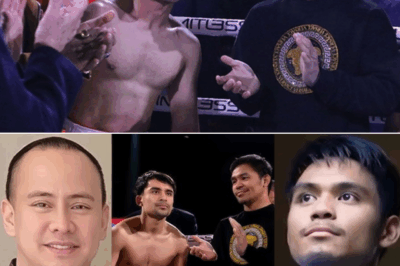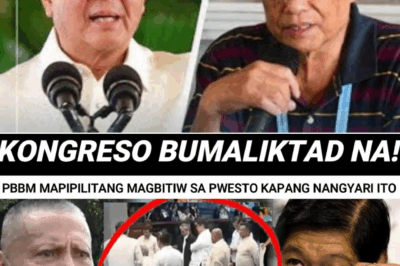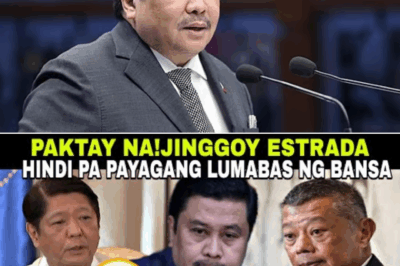The Rise and Reign of the R10 Gang
For many years, the R10 gang has been a notorious force of fear and violence in Manila, particularly around the Tondo district. Named after the R-10 highway where they operated, this group controlled illegal enterprises that included drug trafficking, extortion, gambling, and more. Their influence permeated many layers of society, from the streets to corrupt officials who looked the other way or even collaborated with them. Locals often whispered stories of their brutality, and many victims suffered silently due to the gang’s reputation for harsh retaliation.
The gang’s leadership was composed of hardened criminals who maintained order through intimidation and fear. Even smaller criminal groups knew better than to cross the R10 gang, which functioned like an unofficial mafia in the area. Over the years, attempts to dismantle them met with limited success due to the gang’s deep roots and political protection.

The Planning and Preparation for Operation Hating Gabi
Months prior to the actual raid, law enforcement and city government officials under Mayor “Yorme” began compiling intelligence on the gang’s movements and operations. A multi-agency task force was formed, including the Philippine National Police (PNP), the National Bureau of Investigation (NBI), and local barangay officials. The objective was clear: dismantle the gang and bring its leaders to justice.
Secrecy was paramount to avoid leaks that could tip off the gang. Surveillance was heightened, informants were secured, and digital data was gathered to map out the gang’s hierarchy and operations. Mayor Yorme personally monitored the progress and ensured full cooperation among the agencies.
“Operation Hating Gabi” was scheduled to be swift and decisive. Planners knew the gang’s members would be heavily armed and potentially dangerous, so tactical units were ready to execute simultaneous raids to overwhelm resistance.
The Midnight Strike: Execution and Arrests
In the early hours just past midnight, teams descended upon key locations tied to the R10 gang. The simultaneous nature of the raids caught the gang off guard, resulting in minimal resistance and chaos within their ranks. Over 30 members, including the gang’s top leaders, were apprehended without a single shot fired.
During the raids, police confiscated a large arsenal of weapons: unregistered firearms, explosives, and illegal drugs. Digital evidence including encrypted phones, laptops, and documents revealed intricate details of the gang’s operations and their connection to other criminal groups and corrupt officials. The “kill list” seized suggested the gang was involved in politically motivated assassinations and intimidation campaigns.
Witnesses and victims expressed relief but also fear of potential revenge. Despite the arrests, the shadow of the R10 gang’s influence lingered as smaller factions scrambled for power.
The Public’s Reaction: Hope Mixed with Caution
News of the operation spread quickly throughout Manila. Many residents, especially in Tondo and nearby neighborhoods, felt a renewed sense of hope for safer streets. Local business owners were optimistic about a future free from extortion and violence. Community leaders praised the coordinated effort and called for continued vigilance.
However, some experts warned about a power vacuum. Historically, when dominant gangs are dismantled, rival groups often compete violently to fill the void. This risk of turf wars could temporarily increase crime rates, potentially undoing the progress made by the operation.
Residents also expressed concern about the gang’s possible allies within the government or police force. Calls for thorough investigations into corruption were growing louder to ensure that the dismantling was not just superficial.
Mayor Yorme’s Strong Leadership
Mayor Yorme’s administration earned praise for prioritizing the fight against organized crime in Manila. His hands-on approach, transparency, and firm stance against corruption differentiated him from past leaders. The success of “Operation Hating Gabi” was seen as a reflection of his commitment to restoring law and order.
In a public statement after the raids, Mayor Yorme declared that the operation was just the beginning. He vowed to continue cracking down on illegal activities and cleaning the city’s streets. His leadership has inspired renewed confidence among citizens and law enforcement alike.
The Mayor also stressed the importance of community involvement and urged residents to report suspicious activities. He announced plans to strengthen social programs aimed at preventing youth recruitment by gangs.
Challenges Ahead: Rebuilding Trust and Stability
While the operation marked a major victory, Manila still faces many challenges. Investigations into the gang’s political and institutional connections are ongoing, and there are fears that remnants of the syndicate or allied criminals may attempt retaliation.
Rehabilitating affected communities will require more than just arrests. Government agencies are coordinating with NGOs and local leaders to implement programs focusing on education, livelihood, and mental health support. Efforts to build trust between residents and law enforcement are critical to ensure sustainable peace.
The police also plan to improve their intelligence capabilities and community policing to detect and prevent the resurgence of organized crime.
The Broader Impact on Manila and Beyond
The dismantling of the R10 gang has sent a message to other criminal groups in Manila and the Philippines: no one is above the law. It highlights the effectiveness of coordinated government action and the power of leadership determined to challenge entrenched corruption and crime.
Observers across the nation are watching Manila’s approach closely as a potential model for addressing crime in other urban centers. The operation has sparked debates on law enforcement strategies, governance reforms, and social interventions needed to tackle the root causes of criminality.
Mayor Yorme’s success could redefine how cities combat organized crime in the years to come.
Conclusion
The midnight raid that crippled the R10 gang was more than a police operation; it was a statement of hope and a turning point for Manila. Through strategic planning, inter-agency cooperation, and strong political will, the city took a bold step toward reclaiming its streets from fear and violence. While challenges remain, this historic victory lays the groundwork for a safer, more just Manila. The people and government must now work hand in hand to sustain the momentum and build a community where crime no longer thrives.
News
Dr. Vicki Belo at Hayden Kho Nagbigay ng Bonggang Suporta kay Eman Bacosa: Mamahaling Gamit, Regalo, at Isang Di-Malilimutang Araw
Sa gitna ng mga batikos, tanong, at diskusyong umiikot kay Eman Bacosa Pacquiao nitong mga nakaraang linggo, bigla namang nagbago…
Asawa ng Kambal ni Jinkee Nagsalita: Totoo Ba Talagang Pinababayaan ni Manny Pacquiao ang Anak na si Eman?
Matapos pumutok ang mga komento at batikos online tungkol umano sa “kawalan ng suporta” ni Manny Pacquiao sa anak niyang…
Umuugong na Pagbaliktad: PBBM Pinipigilang Bumagsak Habang Mambabatas at Retired Generals Humaharap at Kumakastigo sa Katiwalian
Sa gitna ng mainit na protesta at lumalakas na panawagang sugpuin ang katiwalian sa pamahalaan, biglang sumirit ang tensyon sa…
Hindi Pinayagang Mag-Travel? Holiday Trip ni Sen. Jinggoy Estrada, Binabara Habang Papalapit ang Posibleng Warrant of Arrest
Sa gitna ng papalapit na Kapaskuhan, isang bagong kontrobersya na naman ang sumabog matapos lumutang ang ulat na nagpaplano umanong…
Viral na Singsing ni Jillian Ward: Simbolo ng Pagkakaibigan o Simula ng Seryosong Relasyon kay Eman Pacquiao?
Sa nakaraang linggo, muling pinag-usapan ng publiko ang tambalang Jillian Ward at Eman Pacquiao matapos mapansin ng mga netizens ang…
Eman Pacquiao, Inamin ang Pagkaka-admire kay Jillian Ward: Pagkakaibigan o Simula ng Pag-ibig? Ang Kontrobersiya sa Showbiz at Social Media
Sa mundo ng showbiz, bihira ang mga kuwento na nagdudulot ng matinding diskusyon sa publiko—at isa na dito ang rebelasyon…
End of content
No more pages to load












